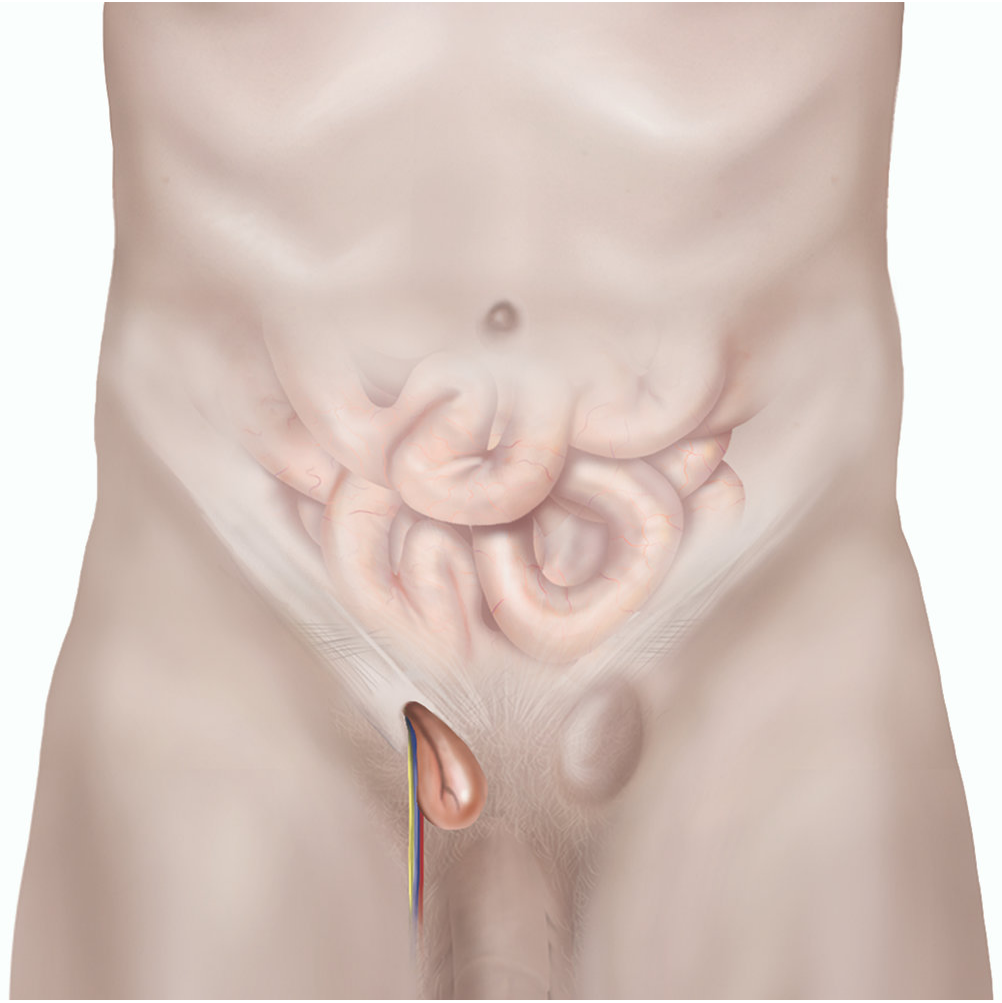Inguinal Hernia

An inguinal hernia
What is an inguinal hernia?
Your abdominal cavity contains your intestines and other structures. These are protected by your abdominal wall, which is made up of four layers.
Weak spots can develop in the layer of muscle, resulting in the contents of your abdomen, along with the inner layer, pushing through your abdominal wall. This produces a lump called a hernia.
An inguinal hernia happens at the inguinal canal. This is a narrow passage in which blood vessels supplying your testicle pass through your abdominal wall.
What are the benefits of surgery?
You should no longer have the hernia. Surgery should prevent the serious complications that a hernia can cause and allow you to return to normal activities.
Are there any alternatives to an open inguinal hernia repair?
You can sometimes control the hernia with a truss (padded support belt) or simply leave it alone. It will not get better without surgery.
What will happen if I decide not to have the operation or the operation is delayed?
Occasionally, the hernia can get larger with time. It can also be dangerous because your intestines or other structures within your abdomen can get trapped and have their blood supply cut off (strangled hernia). The symptoms that may suggest a strangulated hernia are:
- severe pain
- a hernia that will not disappear when you lie down
- vomiting
If you have any of these symptoms you must call your healthcare team immediately as you may need an urgent operation.
What does the operation involve?
Various anaesthetic techniques are possible. The operation usually takes about 45 minutes.
Your surgeon will make a cut on your groin and remove the ‘hernial sac’. They will strengthen the muscle layer with stitches, usually inserting a synthetic mesh to cover the weak spot, and close your skin.
How can I prepare myself for the operation?
If you smoke, stopping smoking now may reduce your risk of developing complications and will improve your long-term health.
Try to maintain a healthy weight. You have higher risk of developing complications if you are overweight.
Regular exercise should help to prepare you for the operation, help you to recover and improve your long-term health. Do not do exercise that involve heavy lifting or make your hernia painful.
Before you start exercising, ask the healthcare team or your GP for advice.
Speak to the healthcare team about any vaccinations you might need to reduce your risk of serious illness while you recover. When you come into hospital, practice hand washing and wear a face covering when asked.
What complications can happen?
Some complications can be serious and can even cause death.
General complications of any operation
- Bleeding
- Infection of the surgical site (wound)
- Allergic reaction to equipment, materials or medication
- Blood clot in your leg
- Blood clot in your lung
- Chest infection.
Specific complications of this operation
- Developing a collection of blood or fluid (haematoma) or fluid (seroma)
- Difficulty passing urine
- Injury to structures that come from your abdomen and are within the hernia
- Temporary weakness of your leg
- Continued discomfort or pain in your groin
- Damage to nerves
- Damage to the blood supply of your testicle.
Consequences of this procedure
- Pain
- Unsightly scarring of your skin
How soon will I recover?
You should be able to go home the same day.
Increase how much you walk around over the first few days.
You should be able to return to work after two to four weeks, depending on how much surgery you need and your type of work. Do not lift anything heavy for at least 6 weeks.
Regular exercise should help you to return to normal activities as soon as possible. Before you start exercising, ask the healthcare team or your GP for advice.
Most men make a full recovery and can return to normal activities. However, the hernia can come back.
Summary
An inguinal hernia is a common condition caused by weakness in your abdominal wall, near the inguinal canal. If left untreated, an inguinal hernia can cause serious complications.
Where to get help
Last reviewed: 07-07-2023
Acknowledgements
Patient Safety & Clinical Quality
EIDO Healthcare Australia

The operation and treatment information on this page is published under license by Department of Health Western Australia from EIDO Healthcare Australia and is protected by copyright laws. Other than for your personal, non-commercial use, you may not copy, print out, download or otherwise reproduce any of the information. The information should not replace advice that your relevant health professional would give you.